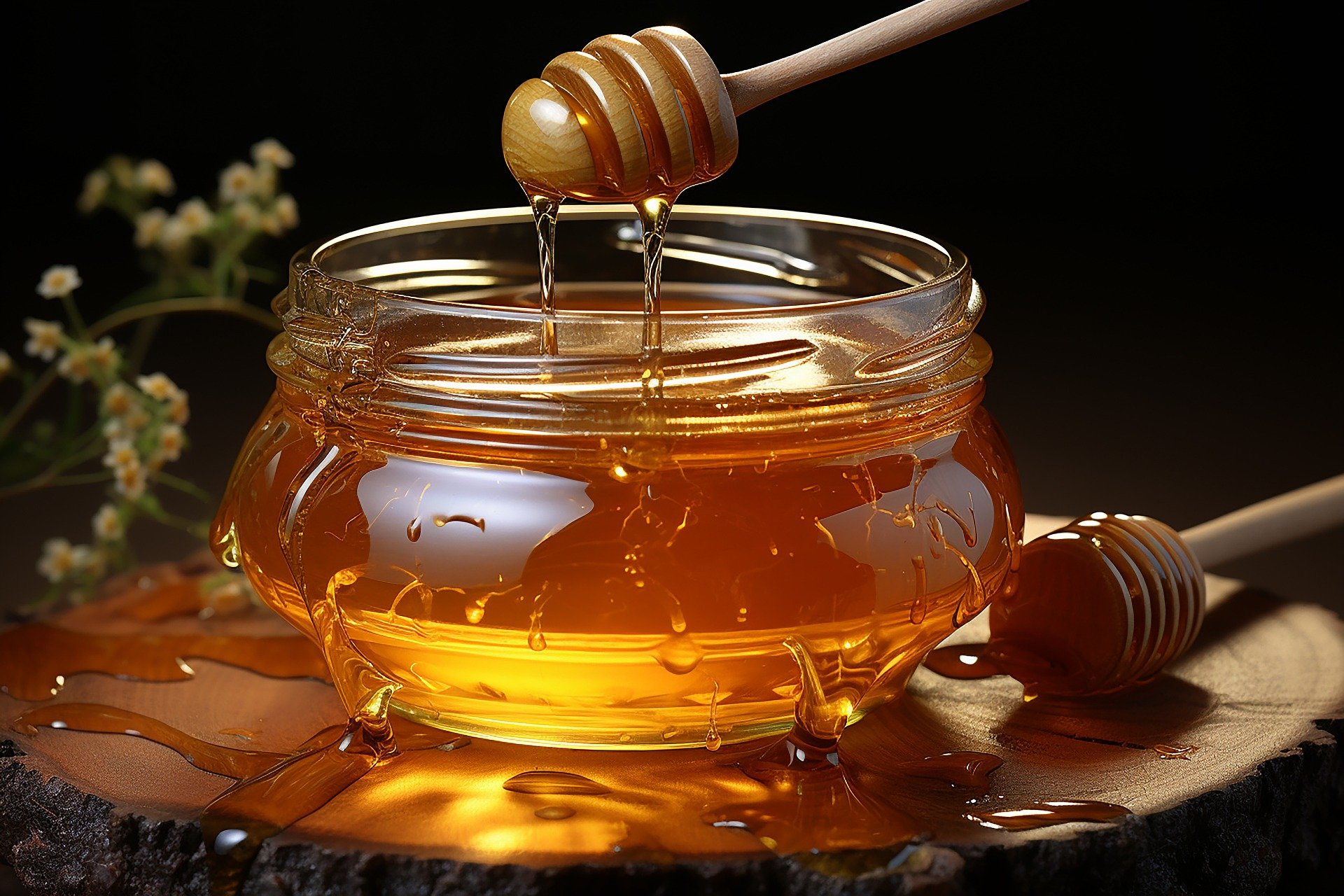How to Verify Honey's Authenticity: Key Methods for Detecting Purity and Adulterants

Bee honey is loved for its delicious taste and the benefits it brings to the body. Its antibacterial and antifungal properties are well studied and proven, but these benefits apply only to natural honey. When it comes to popular store-bought jars, there’s a high risk of purchasing counterfeit honey. The same can happen at markets. Knowing how to check honey at home is not mere curiosity but a health-conscious decision.
Honey and Its Benefits
Honey is a thick, golden liquid created by honeybees from the nectar of flowering plants. First, bees collect and partially process the nectar, then evaporate moisture to create the final product.
One tablespoon of fresh honey contains:
- 61 calories;
- 17g of carbohydrates (sugars).
It contains no fat, protein, or fiber. The exact chemical composition depends on the plant source. For example, linden honey contains over 200 beneficial substances, primarily fructose and glucose (95-98%), along with amino acids, minerals, vitamins, and enzymes.
Freshly harvested honey is a viscous substance, with the viscosity depending on its water content, about 18%. In crystallized honey from the previous year, it’s less than 10%. When air humidity exceeds 60%, improperly stored honey starts to absorb moisture from the air, becoming more liquid, a trick used by dishonest sellers who dilute it with sugar syrup to increase quantity.
People have been using honey for about 8,000 years. Ancient Vedic medicine regarded it as a gift from nature, beneficial for those with weak digestion. Assyrians and Chinese used it for wound healing and treating intestinal diseases. In Ancient Egypt, it was mixed with wine or other ingredients for medicinal purposes. Egyptians were aware of its antibacterial properties, while the Greeks used honey for various purposes, including treating baldness and as a contraceptive.
The Benefits of Honey:
- Reduces the risk of cardiovascular diseases;
- Helps fight upper respiratory infections and coughs;
- Eases gastrointestinal disorders;
- Acts as an antidepressant, anticonvulsant, and calming agent;
- Aids with insomnia;
- Heals wounds and treats gum diseases.
When buying honey from a store, you cannot evaluate its taste or aroma. Thus, you must rely on the label.
Types of Honey to Look for on Labels:
- Raw Honey: Honey directly from the comb that hasn't been heated. This retains the most beneficial enzymes.
- Unfiltered Honey: A marketing term highlighting naturalness. Beekeepers filter honey to remove bee wings and other debris, but some particles remain, indicating "authenticity."
- Organic Honey: Honey collected from plants not treated with pesticides. True organic honey often comes from remote areas in Mexico or Brazil, where beekeepers place hives far from human activity and agriculture.
- Artificial Honey: Syrup with artificial sweeteners designed for sugar-free diets. However, its health benefits are questionable due to the lack of natural nectar.
Beware of Counterfeits
While beekeepers deliver high-quality products, intermediaries may adulterate honey by adding substances like:
- Starch;
- Corn syrup;
- Sugar syrup.
These additions not only increase the quantity but also sweeten immature honey, resulting in an inferior product that stores poorly and may ferment.
How to Test Honey for Purity at Home
- Water Test: Pure honey doesn't dissolve easily in water. Drop some honey into a glass of cold or warm water (around 20°C). If it dissolves quickly, the honey is likely diluted.
- Heat Test: Pure honey caramelizes and doesn't foam when heated. Heat a spoonful of honey over a flame; if it turns into a dark brown caramel without foaming, it’s pure.
- Flame Test: Dip a cotton swab in honey and set it alight. Pure honey will burn briefly, as it contains little water and a lot of sugar. The burnt sugar forms a hard, brown mass.
- Iodine Test: Mix honey in water and add a drop of iodine. If the solution turns blue, starch or flour is present.
- Bread Test: A piece of bread spread with honey will become hard and crunchy after 2-3 minutes. If the bread remains soft, the honey contains added water.
- Vinegar Test: Honey should not foam when mixed with vinegar. If bubbles form, adulterants may be present.
- Stickiness Test: Pure honey is less sticky, flows slowly, and is thick. Added sweeteners make honey stickier and more liquid. To test, apply a drop of honey to your fingertip and turn your hand palm down. Pure honey will stay in place, while diluted honey will drip off.
- Paper Test: Pure honey doesn’t wet paper or soak through. Spread some on paper; if it doesn’t absorb, the honey is pure.
Myths About Honey Purity
There are a few myths about honey that create misconceptions for buyers:
- Ants Only Eat Impure Honey: Ants are naturally attracted to sugar, so they'll flock to both pure and impure honey.
- Honey Dissolves in Alcohol: This myth has contradictory versions, neither of which should be trusted.
- Honey Forms Hexagons in Water: Some believe honey forms a hexagon shape (like honeycomb) when dropped in water. This is false.
By testing honey at home, you can protect your health and ensure you're getting the natural product you expect.